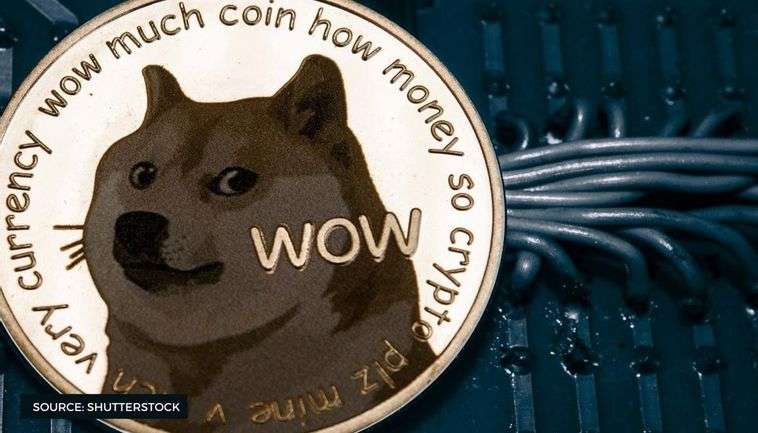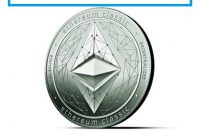One Doge = One Doge. At least that’s what many in the Dogecoin community say and which seeks to make humorous Dogecoin’s (DOGE-USD) mix of steady inflation and high price volatility.
In a cryptocurrency-world dominated still largely by Bitcoin (BTC-USD), Dogecoin stands out remarkably among the ‘non-Bitcoins’, also known as altcoins, for several reasons:
1. It has some high-profile persons who remark on and follow it, in particular the self-anointed “former CEO of Dogecoin” Elon Musk who appears to use it as a way to mock Bitcoin and cryptocurrencies in general.
2. It is one of the oldest cryptocurrencies out there, having been released in December 2013.
3. Its price is particularly unusual as one Dogecoin is, and generally has been, worth so little as to allow even a retail user to accumulate a large seeming-fortune (at least in Dogecoin terms). A Dogecoin unit has hovered recently near its all-time highs of between 5 and 6 cents but for much of its history has been worth just a fraction of a cent, for years even staying consistently as low as $0.001 to $0.002 per unit. This has also meant it has seen extraordinary price volatility even as its nominal price still seems “low” – if one entered Dogecoin at $0.006 and sold around $0.06 that is an over 100x return rate.
4. It neither has a fixed max supply nor an inflation rate controlled by either the market nor a central issuing node/organization. Rather, Dogecoin began with an initial max supply of 100 billion Dogecoins that was reached in 2015 whereupon it began a fixed inflation rate of 5.25 billion Dogecoins per year, creating a proportionally decreasing inflation rate as time goes on. Currently there are around 128 billion Dogecoins, meaning an annualized inflation rate of a bit above 4%.
5. Much of the intention behind its creation was lighthearted and still is. When Dogecoin originated it essentially took the famous “Doge” Internet meme of a Shiba Inu dog and immortalized it in the form of the then-budding cryptocurrency world, creating a plethora of jokes and humor that projected a brighter tone as compared with most cryptocurrencies that stay rooted in a generally serious public image.
Even though Dogecoin originated, and still is, a joke, that doesn’t mean it doesn’t have real monetary and technical uses. Dogecoin transfers are quite fast, cheap, and exact (due to the minute value of a Dogecoin). Many large crypto-exchanges support it, such as Kraken and Binance, and it even is available, even if not in wallet and transferable form, on the popular Robinhood stock trading app. Coinbase, while not offering it for sale, still even hosts wallet capabilities for it.
Dogecoin in recent weeks has seen an unusual price surge at a rate that even surpasses that of Bitcoin. I believe this is due to a combination of another surging “cryptocurrency interest” season similar to late 2017/early 2018, and likely to end eventually in a somewhat similar manner, and some statements by Tesla CEO Elon Musk that have driven interest to Dogecoin even though he has stated recently he owns none.
While I’m not certain the current price for Dogecoin is sustainable and also believe that price volatility will still be very much part of this niche cryptocurrency, I particularly like Dogecoin because its financial and technical attributes make it an interesting crypto-currency for actual use in the future. While it may not become the cryptocurrency of an Elon-Musk-run Mars as some advocates say, it nonetheless allows exact, quick, and cheap payments in a way that Bitcoin currently does not. It is ‘fun’ and easy to popularize and access, meaning retail adoption may prove more likely than some of the very technical cryptocurrencies.
Furthermore, its fixed inflation rate means that new Dogecoins will always, at least under the current system, be created and mining still ongoing – this is what allows a cryptocurrency to grow and expand with its user base and resolves, for the most part, a scalability problem that Bitcoin still has not resolved. Dogecoin also is able to control its risk of falling into the altcoin-abyss of forgotten cryptos through its partial piggybacking off of mining the popular Litecoin.
Lastly, even though its volatile, the fact that it still is pegged to itself means it can stand out as a ‘currency’ more than stablecoins that utilize cryptocurrencies’ technical attributes without the fiat-to-crypto price exchange.
In short, I like Dogecoin as a real cryptocurrency for potential common and widespread use someday. I can imagine someday in the future paying for a cup of coffee in Dogecoin but doubt I would ever do so with Bitcoin (unless I wanted to pay a $5 transaction fee on a $3 coffee and wait 10 to 20 minutes for it to process). Until Dogecoin sees widespread adoption it likely will continue to see extensive price volatility, but nonetheless I think it’s a worthwhile cryptocurrency to keep an eye on.




